I'm trying to design this state machine in verilog:
I was have:
`timescale 1ns/1ns
module labEightMachine(y, x,clk,clr)
output y;
input [1:2] x;
input clk, clr;
reg [1:2] q;
reg y;
reg nX;
always @ (posedge clk)
begin
if(clr)
{q}<=2'b00;
else
q<= {nX}
end
always @(y,x)
begin
if(q==2'b00)
if(x==2'b00)
q<=2'b00;
else
q<=2'b01;
y<=1;
if(q==2'b01)
if((x==2'b00)||(x==2'b01))
q<=2'b00;
y<=0;
else
q<=2'b11;
y<=0;
if(q==2'b11)
if(x==2'b10)
q<=2'b10;
y<=1;
else
q<=2'b00;
y<=0;
if(q==2'b10)
q<=2'b00;
y<=0;
end
endmodule
If any one could help by telling me where it is incorrect, that would be greatly appreciated. The state machines confuse me and I'm not sure that I am reassigning everything correctly.
